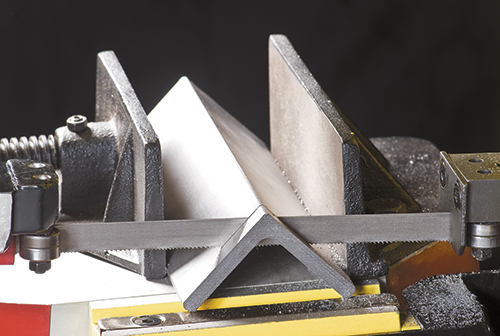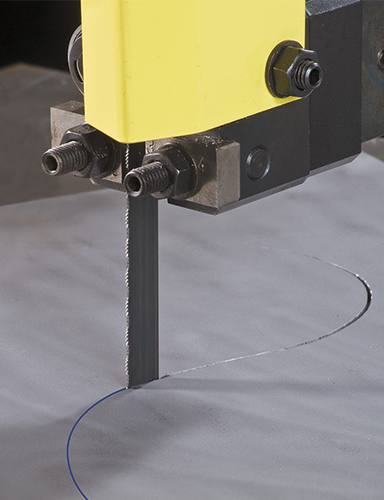“A softer material doesn’t require a large rake angle,” explains Gordon, “whereas harder material requires the more aggressive cut offered by a higher positive rake angle to penetrate the material.”
A variety of exotic materials, including higher-strength steels and others with unique recipes, have inundated tool-build and part-production operations within the past 10-15 years. This development demands even closer attention to the material during blade selection, and has prompted saw manufacturers to develop blades that tackle these challenges.
“Due to this influx, sawing, turning and otherwise working these materials challenge tool builders and part manufacturers,” Gordon says. “They must better understand what they are cutting, as do we as saw and saw-blade providers.”
Tie Selection to Production Goals
Upon addressing the work material, cutting decisions should reflect the production goal.
“This holds true for big production shops or mom-and-pop operations,” Gordon explains. “Is a manufacturer looking for production speed—getting pieces cut as quickly as possible―or for the best blade life, or for a blade with the best all-around capabilities? All of these decisions affect production rates.”
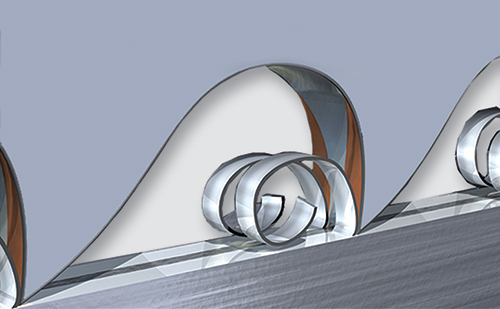 |
| Bimetal saw blades, with steel wire added to backing material, offer a means to extend blade life. Here’s a depiction of a bimetal blade in action, with a patented process enabling backing material to wear away upon first cut to expose extra cutting edges on the blade teeth. |
“The small tool and die shops or smaller fabrication job shops with mixed products typically cut a wide range of materials,” he says, “everything from structural materials to sheet metals to solids, and from soft to hard. Multipurpose blades may make the most sense―not perfect for any one application—but good for all of them.”
Again, the increased variety of materials has produced an increased selection of blades, including more models for aggressive cutting. But aggressive cutting comes at a cost.
“More aggressive cutting places more demands on the sawing machine, and also challenges users to control material feed rates and blade speeds,” Gordon says. “Less-aggressive cutting, say with a 0-deg. rake angle, offers control for general-purpose applications across a relatively wide range of materials.”
Bottom line: Blade selection includes trade-offs, so make sure that selection aligns with production goals.
Longer-Life Blades Developed
The material and workpiece size profoundly affect blade life. No matter the production volumes, changing out worn blades is no one’s idea of productive work. Blade manufacturers have worked on designs and products to minimize those occurrences, and to ensure quality cutting over time, according to Gordon.
Bimetal blades offer an option for longer life and for use in a variety of cutting applications, with steel backing providing blade rigidity. One example of a more recent bimetal-blade development offered by Gordon: Starrett’s Bi-Metal Unique blades. This technology joins two strips of high-speed steel wire to the backing steel using solid-state diffusion bonding as opposed to conventional construction employing electron beam or laser welding to join the wire. Here, the wires essentially are fitted into grooves within the backing material. A larger weld-contact area—170 percent more than with conventional methods—reduces fracture at the steel-wire/backing-material interface, according to Starrett officials. Upon initial use, the backing material wears away, altering the blade area engaged in the cut to provide double the number of cutting edges. The result: rapid cuts, eased chip removal and reduced tooth stripping, as well as the ability to allow more coolant to flow into the cutting area.
Options for Automated Cutting
For sawing, automation takes on a couple of meanings. Rare are the fully autonomous setups that include robot-fed saws with automated loading and unloading, according to Gordon.
Some saws also enable users to plug in the type and size of material, with the saws automatically adjusting speeds and other parameters for optimal production. Less all-in saw-automation features include automatic shuttling of material for cutting in incremental lengths along a larger stock piece, and automatic cutting of a set number of pieces entered by the operator. MF
View Glossary of Metalforming Terms
See also: The L.S. Starrett Company
Technologies: Cutting
Comments
Must be logged in to post a comment. Sign in or Create an Account
There are no comments posted.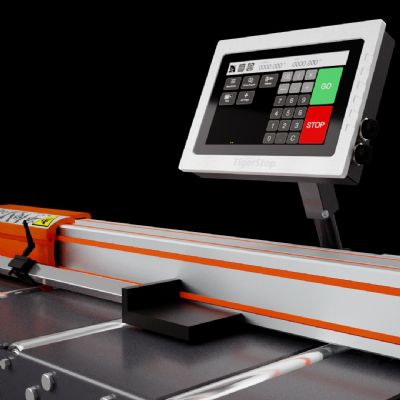 Cutting
CuttingHigh-Accuracy Material Pusher Handles Loads to 240 lb.
Tuesday, February 25, 2025
 Cutting
CuttingSMX Industrial Solutions Welcomes Neal Glassett as Vice Pres...
Tuesday, February 13, 2024
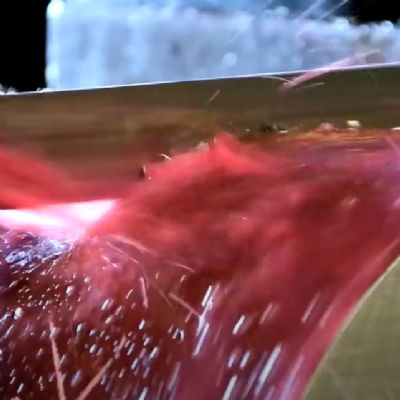 Cutting
CuttingAll-Purpose Bandsaw Blades Cut a Variety of Steels
Friday, January 19, 2024







